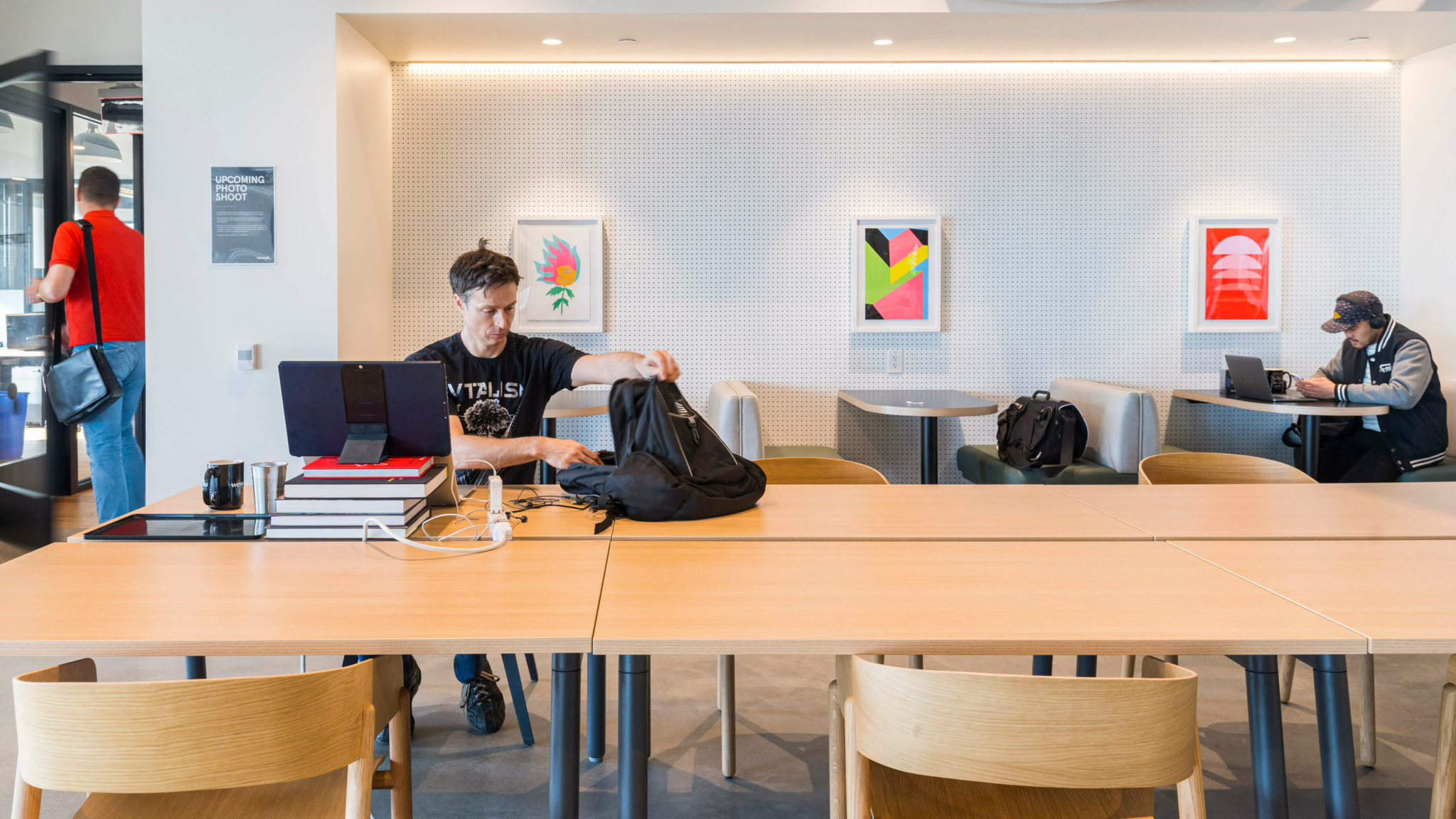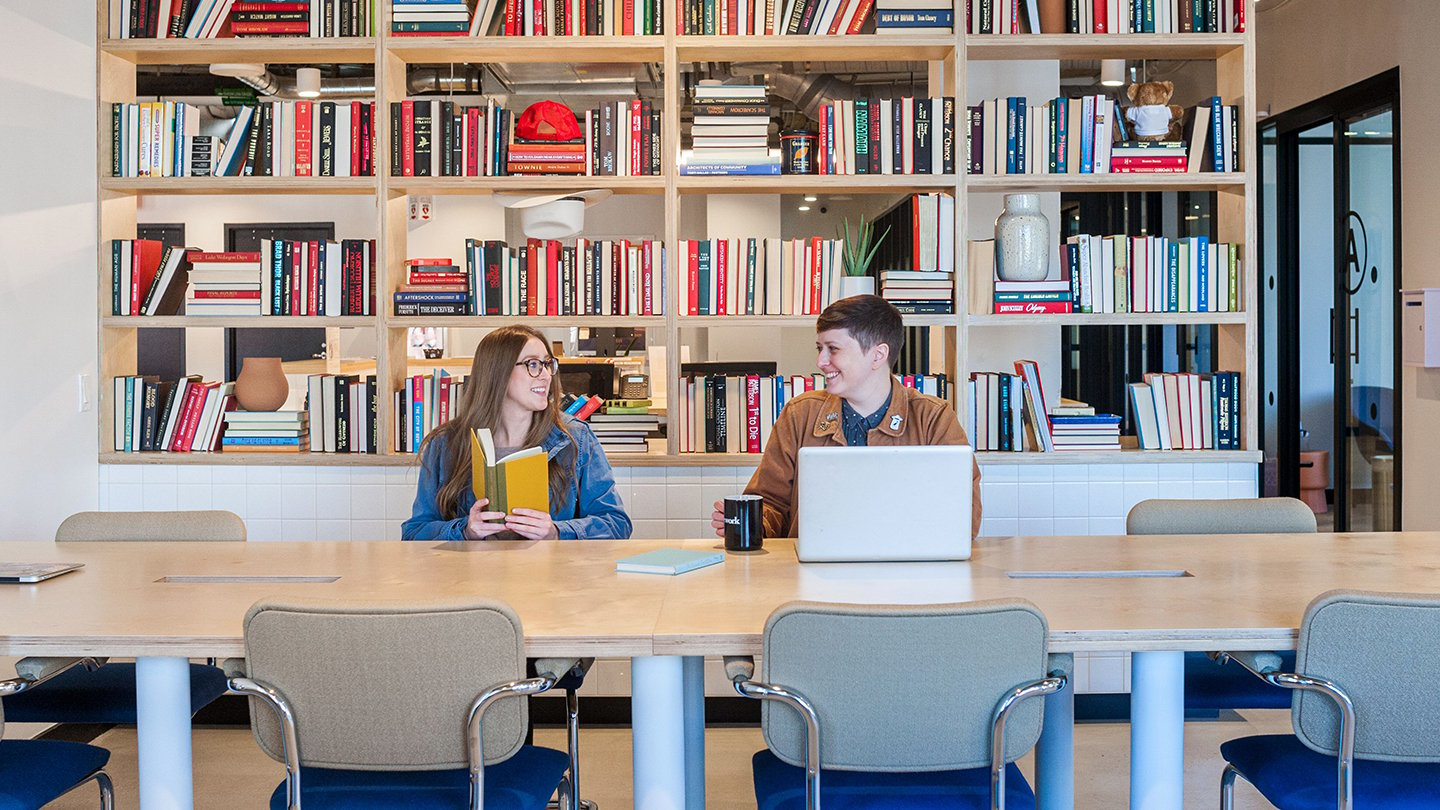“You can walk into any classroom and it looks the same as it did 200 years ago,” says Doug Lederman, editor of Inside Higher Ed. However, that’s all changed, as the pandemic set into motion different modes of learning. Institutions have been forced to rethink where and how learning happens.
Lederman was a speaker on a recent webinar hosted by WeWork about how learning now happens everywhere. (Watch the webinar on-demand here). Lederman had a conversation with his colleague Scott Jaschik about the current hybrid model of learning and whether there is a way of learning that trumps the traditional “butts in seats” model. They also examined some of the pre-pandemic learning models that are gaining ground now.
The many challenges the pandemic brought forth
While the pandemic created new ways of learning and greater flexibility for students, it also brought inequities to light. One of these issues was the “digital divide,” the difference in levels of access many students had to computers and Wi-Fi. Students also had different levels of access to safe and secure, quiet places to study.
“We even saw some colleges [trying to combat this] by setting up Wi-Fi stations in their parking lots,” says Lederman. Enrollment data showed that students from low-income and minority groups were disproportionately affected by COVID-19 and dropped out, he adds.
Institutions increased training and support for faculty members to match higher student expectations. However, “the quality of [the instruction] we saw delivered was not great at the beginning. There was a lot of variation, and the [instructors] who had more exposure to online learning were able to pivot better and faster than those who did not,” says Lederman.
The pandemic also forced institutions to address the financial implications of operating universities, as well as how they use campus space. “Perhaps there’ll be fewer office desks and potentially fewer buildings,” says Lederman. We’d also expect a decentralization of facilities across the board, from dorm rooms to coworking spaces.
It’s not the end of face-to-face learning
Universities had no choice but to integrate online learning into their programs last year when we all sheltered in place due to COVID-19. This actually propelled things already in play pre-pandemic. For example, prior to the pandemic, a third of all students, mainly older, working, or location-bound students, had taken at least one online course.
The number has grown steadily in recent years. “The enrollment of online learning had been growing at a time when enrollment in general in higher education was flattening and declining,” says Lederman. He added that more students had been signing up for online courses because of their flexibility and convenience.

Yet while more students have been signing up for online classes, many still prefer a split of in-person and online classes (a hybrid model of learning). They cite socialization and collaboration as key components of the in-person learning experience.
This past December, WeWork and research firm brightspot strategy conducted a survey of more than 400 students in the U.S. The study found that of those students attending face-to-face classes, 15 percent were more likely to rate their academics as “far above average” compared to those learning only remotely. Hybrid learners were also 33 percent more likely to recommend their university to their friends.
Is there a better way to learn?
Lederman emphasizes that it’s not necessarily the mode of learning (online or in-person) that we should put under the microscope, but the way courses are built and structured that can make all the difference. Institutions can succeed by putting student needs and goals top of mind in order to keep students engaged.
“The best online courses are practically and purposefully built. In general, online education has a [better] focus on student needs, in a way that is more true than for in-person learning,” he says.
It’s clear that there are benefits to some in-person experiences for students. Take the case of the Georgia Tech Atriums, a concept that re-creates scalable gathering places in coworking spaces, corporate offices, or even malls close to where students live. Lederman says this model was brought into existence because “many institutions realized that online learners need to be around other people to learn, gather, and collaborate.”
The importance of having access to spaces where students can socialize, learn, and network is why WeWork partners with institutions who want to provide that to their students.
Another type of education model gaining momentum is HyFlex instruction, in which courses allow students to have the same experience, whether or not they opt for in-person or online learning. This presents some challenges, as studies show learning tends to favor on-site students and make online students feel as if they are simply observing. However, these challenges can be mitigated through engaging formats for both parties. This can be in the form of interactive Q&A sessions, group work, and having student presentations with a mix of students. Additionally, it’s not only the students who have flexibility—instructors can also shift between face-to-face and remote teaching.
Ultimately, the higher education system is in for a much-overdue overhaul. Students, faculty, and administrators who can get on board will be primed for success.
Melissa Yap is a content marketer for leading technology platform MNTN and a freelance writer with Australian roots, now based in Los Angeles via New York City and London. Her writing has been featured in Fortune, Huffington Post, Monocle, CNN, and Adobe.
Rethinking your workspace?










